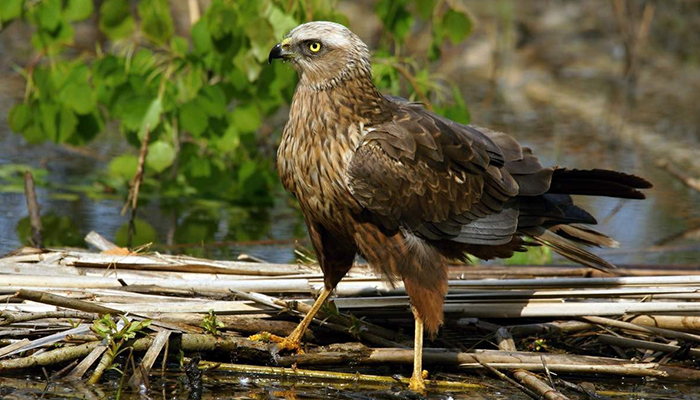
English: Western Marsh Harrier, Marsh Harrier
Russian: Болотный лунь
German: Rohrweihe
French: Busard des roseaux
Mongolian: Намгийн хулд, Намгийн цагаан элэгт
Japanese: ヨーロッパチュウヒ (Yoroppa-Chuhi)
Body Length: 43-55 cm
Wing span: 115-140 cm
Habitat: Breeds on shallow freshwater lakes or rivers with lining
of fairly extensive reedbeds. Except in south and west migratory,
wintering in Africa. Small population in E Britain, now about 350 pairs. Food
small mammals, birds, insects. Nests in tall reedbed.
Identification:
Largest harrier, somewhat bigger than Common Buzzard but with slimmer body,
narrower wings and longer tail. Soars with wings raised in shallow V, glides
with ‘arm’ raised and ‘hand’ more level. At distance possible to confuse with
Black Kite and dark-morph Booted Eagle, but has less ‘fingered’ wing-tips,
rounded tail and different head-on profile.
- Adult
♂: Distinctly set-off black wing-tips, uniformly pale blue-grey tail, head and
breast pale yellowish-white, upperwing three-or four-coloured. Some are very
pale, at distance recalling ♂ Hen Harrier, but have chestnut belly and chestnut
on upperwing-coverts.
- Adult
♀: Dark brown with creamy-white crown, throat and forewing (variable amount).
Often pale patch on breast. ♂ like pale birds distinguished by lack of
well-marked black wing-tips and by brown tail.
- Juvenile:
Blackish-brown with golden crown and throat, sometimes also forewing; a rare
morph is all dark. Differs from adult ♀ in narrow golden line along greater
upperwing-coverts, very dark underwing-coverts, darker tail, narrower ‘hand’
and more bulging ‘arm’.